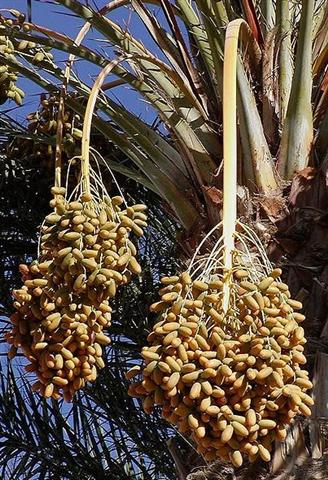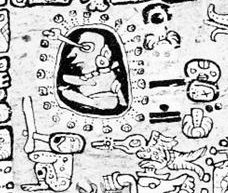Unfortunately there are no glyphs of the
hakaariki type in the B text. Instead, let
us return the pair of 'listening left ears'
on side b of the tablet:
 |
 |
|
Ba5-37 |
Ba5-38 (202) |
 |
 |
 |
 |
|
vaha kai |
Ba9-29
(369) |
Bb4-17 (138) |
Bb5-2 (165) |
 |
 |
 |
 |
|
Bb2-37 |
Bb5-30 |
Bb6-13 |
Bb9-20 |
As to the position of the eye-catching
glyph Ba9-29 it might possibly be
compared to how the Julian spring
equinox (3-25) was 4 days later than the
Gregorian equinox (3-21), i.e. 369 = 365
+ 4 could be a hint for the reader that
the Julian calendar should be used here.
The returning daylight meant the pair of holes in the east and the west had
been reopened, once again making the
eyes as if by magic (mana) come
alive to the marvels of our visual world
of colour and beauty.

... There is a
curious tradition concerning these
grizzled, otherworldly statues, solemn
and powerful, with their blank, aloof
eye-sockets gazing out over the
limitless ocean. Like most of the other
Moai of Easter Island the local
belief is that they died, long ago, at
the time when mana - magic -
supposedly fled from the island never to
return. However, in common with only a
very few of the other Moai, it is
believed that these particular statues
still have the power, twice a year, to
transform themselves into aringa
ora - literally 'living faces' -
a concept startingly similar to the
ancient Egyptian notion that statues
became 'living images' (sheshep ankh)
after undergoing the ceremony of the
'opening of the mouth and the eyes'.
Statues at Angkor were likewise
considered to be lifeless until their
eyes had been symbolically 'opened'
...
.jpg)
.jpg)
Assuming the flow of fixed stars continues
uninterrupted from Ba10-32 and on to Bb1-1,
|
a1 |
47 |
47 |
b1 |
31 |
31 |
|
a2 |
40 |
87 |
b2 |
47 |
78 |
|
a3 |
37 |
124 |
b3 |
43 |
121 |
|
a4 |
40 |
164 |
b4 |
17 |
138 |
|
a5 |
38 |
202 |
25 |
163 |
|
5 |
207 |
b5 |
40 |
203 |
|
a6 |
44 |
251 |
b6 |
40 |
243 |
|
a7 |
43 |
294 |
b7 |
41 |
284 |
|
a8 |
46 |
340 |
b8 |
42 |
326 |
|
a9 |
29 |
369 |
b9 |
50 |
376 |
|
20 |
389 |
|
a10 |
32 |
421 |
b10 |
42 |
418 |
|
|
b11 |
43 |
461 |
|
b12 |
45 |
506 |
|
sum |
421 |
sum |
506 |
we should be able to connect Spica at Ba5-38 (202) with Spica at Bb4-18 (421 + 139 = 560):
|
ko te rima kua noho - ki te
ragi kua o ki to pure |
kua oho te rima ki te hare
pure |
kua tomo te pure ki te hare |
|
Oho. 1. To go:
ka-oho! go! go away! (i.e.
'goodbye' said by the person
staying behind); ka-oho-mai
(very often contracted to:
koho-mai), welcome!
(lit.: come here); ku-oho-á
te tagata, the man has gone.
Ohoga, travel, direction
of a journey; ohoga-mai,
return. 2. Also rauoho,
hair. Vanaga. 1. To delegate;
rava oho, to root. 2. To go,
to keep on going, to walk, to
depart, to retire; ka oho,
begone, good-bye; oho amua,
to preced; oho mai, to
come, to bring; oho arurua,
to sail as consorts; hakaoho,
to send, a messenger. 3. Tehe
oho te ikapotu, to abut,
adjoin; mei nei tehe i oho
mai ai inei te ikapotu, as
far as, to; kai oho, to
abstain, to forego; hakaoho,
to put on the brakes. 4. The
head (only in the composite
rauoho, hair). Churchill. |
 |
 |
 |
|
Ba5-36 |
Ba5-37 |
Ba5-38
(202) |
|
σ Virginis (*200.4) |
γ Hydrae (*201) |
SPICA (*202 = *19 + *183) |
|
Oct 7 (280) |
8 (281 = 400 - 183 + 64) |
9 (282 = 36 + 182 + 64) |
|
FEBR 3 (399) |
4 (400) |
5 (36) |
|
No star listed |
ADHIL (*19 = *202 - *183) |
KSORA (Knee) (*20) |
|
ko te tagata kia hiti ki te
purega |
|
Hiti. 1.
To show itself again, to
reappear (of the new moon, of a
constellation - meaning
uncertain). 2. Said of thin,
tough-fleshed fish of
indifferent taste: ika hiti.
3. Said of fish when they come
to the stones of the shore for
insects among the seaweed: he
hiti te ika. 4. To reproach
someone for his ingratitude.
Vanaga. 1. To rise, to appear,
to dawn; hitihaga,
rising; hitihaga roa,
sunrise; hitihiti, to
dawn; horau hitihiti,
break of day; hakahiti ki te
eeve, to show the buttocks.
2. Puffed; gutu hiti,
thick lips. Churchill. |
 |
 |
|
Ba5-39 |
Ba5-40
(204) |
|
71 VIRGINIS (*203) |
No star listed (204) |
|
Oct 10 |
11 (284) |
|
FEBR
6 (37) |
7 (403) |
|
δ Phoenicis (*21) |
υ Andromedae (*22) |
... From
guessing that
Ba1-1 had been
intended to
represent the
first day of a
new year it
ought to be
possible to
visualize some
of the
consequences. I
am firmly
convinced it was
necessary to
allot 1 right
ascension date
for each glyph.

However, in order to secure the flow in
time-space we
ought to first move from Ba5-40 to the
end of side a:
|
ko te tagata kia hiti ki te
purega |
205 |
|
Hiti. 1.
To show itself again, to
reappear (of the new moon, of a
constellation - meaning
uncertain). 2. Said of thin,
tough-fleshed fish of
indifferent taste: ika hiti.
3. Said of fish when they come
to the stones of the shore for
insects among the seaweed: he
hiti te ika. 4. To reproach
someone for his ingratitude.
Vanaga. 1. To rise, to appear,
to dawn; hitihaga,
rising; hitihaga roa,
sunrise; hitihiti, to
dawn; horau hitihiti,
break of day; hakahiti ki te
eeve, to show the buttocks.
2. Puffed; gutu hiti,
thick lips. Churchill. |
 |
 |
|
Ba5-39 |
Ba5-40
(204) |
|
71 VIRGINIS (*203) |
No star listed (204) |
|
Oct 10 |
11 (284) |
|
FEBR
6 (37) |
7 (403) |
|
δ Phoenicis (*21) |
υ Andromedae (*22) |
|
kua maa |
ko koe - e kua hatu ko to toa |
e tagata haga - i to ua e kua
koti ko te henua |
ma te maitaki |
koia ra kua hoki to rarahoi |
kua tu ki to toga |
Etagata itiiti |
|
Maitaki.
Clean, neat, pure, pretty, nice,
beautiful, handsome; tagata
rima maitaki,
clean-handed man, correct man.
Vanaga. 1. Good. Henua
maitaki = the good earth. 2.
Shine. Marama maitaki =
the shining moon. Barthel. Ce
qui est bon. Jaussen according
to Barthel. Meitaki,
good, agreeable, efficacious,
excellent, elegant, pious,
valid, brilliant, security, to
please, to approve (maitaki);
ariga meitaki, handsome,
of pleasant mien; mea meitaki
ka rava, to deserve;
meitaki ke, marvelous,
better. Hakameitaki, to
make good, to amend, to do good,
to bless, to establish.
Meitakihaga, goodness. PS
Pau.: maitaki, good.
Mgv.: meitetaki,
beautiful, good. Mq.: meitai,
good, agreeable, fit, wise,
virtuous. Ta.: maitaiki,
good, well. Niuē:
mitaki,
good. Maitakia,
clean. Churchill.
Toga. 1. Winter
season. Two seasons used to be
distinguished in ancient times:
hora, summer, and toga,
winter. 2. To lean against
somehing; to hold something
fast; support, post supporting
the roof. 3. To throw something
with a sudden movement. 4. To
feed oneself, to eat enough;
e-toga koe ana oho ki te aga,
eat well first when you go
to work. Vanaga. 1. Winter. P
Pau., Mgv.: toga, south.
Mq.: tuatoka, east wind.
Ta.: toa, south. 2.
Column, prop; togatoga,
prop, stay. Togariki,
northeast wind. Churchill.
Wooden platform for a dead
chief: ka tuu i te toga
(Bb8-42), when the wooden
platform has been erected.
Barthel 2. The expressions
Tonga, Kona, Toa
(Sam., Haw., Tah.), to indicate
the quarter of an island or of
the wind, between the south and
west, and Tokelau,
Toerau, Koolau (Sam.,
Haw., Tah.), to indicate the
opposite directions from north
to east - expressions universal
throughout Polynesia, and but
little modified by subsequent
local circumstances - point
strongly to a former habitat in
lands where the regular monsoons
prevailed. Etymologically 'Tonga',
'Kona', contracted from 'To-anga'
or 'Ko-ana', signifies
'the setting', seil. of the sun.
'Toke-lau', of which the
other forms are merely
dialectical variations,
signifies 'the cold, chilly
sea'. Fornander. |
 |
 |
 |
 |
 |
 |
 |
|
Ba10-26 |
Ba10-27 |
Ba10-28 |
Ba10-29 |
Ba10-30 |
Ba10-31 (420) |
Ba10-32 |
|
ALGENIB PERSEI (*50) |
*51 |
*52 |
ACRUX (α Crucis) |
*54 |
*55 |
ALCYONE |
|
May 10 |
11 |
12 |
13 |
14 |
15 |
16 (136) |
|
SEPT 6 |
7 (250) |
8 (235 + 16) |
9 |
10 |
11 |
12 (255) |
|
*233 |
*234 |
GEMMA (*235) |
*236 = 472 / 2 |
*237 |
*238 |
*239 |
Anciently they had waited until the
reappearance of the significant star
(after its close encounter with the
Sun), which took about 16 days. This
explains the addition of 16 right
ascension days compared to the true
heliacal dates.
... Like the sun,
chiefs of the highest tabus - those who
are called 'gods', 'fire', 'heat', and
'raging blazes' - cannot be gazed
directly upon without injury. The lowly
commoner prostrates before them face to
the ground, the position assumed by
victims on the platforms of human
sacrifice. Such a one is called
makawela, 'burnt eyes' ...
For instance was Alcyone not yet visible in
May 16 (136). To find out its true heliacal
day in the Golden Age of the Bull we
have to first reduce with 64, and 136 - 64 =
72 (MARCH 13). Then, around MARCH 29 (88 = 72
+ 16) Alcyone would have returned to
visibility.
Similarly should we add *16 to *235 (at
Gemma) in order to find the
corresponding day position according to
the epoch of the Bull. Thus the Julian
spring equinox date 'March 25 (84)
should have corresponded to day 84 + 16 = 100 in the
Golden Age.

|






.jpg)
.jpg)


















